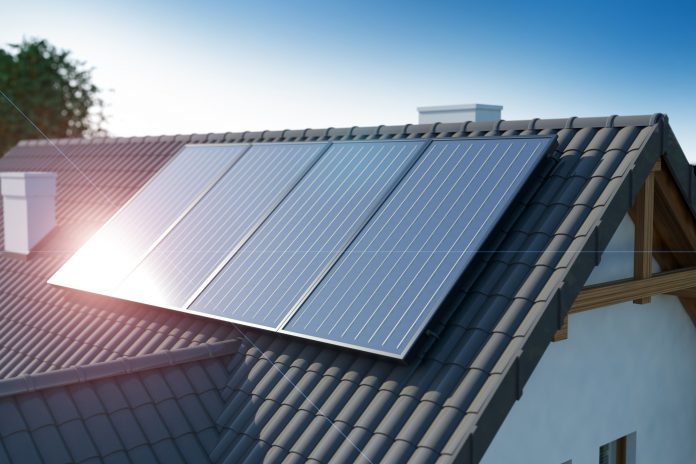The United States generates enough solar power to provide electricity to 18 million households. It’s still far from the goal, but it’s thanks to the government pushing its initiative to achieve reliance on renewable energy.
At the same time, more and more homeowners are adopting solar energy. Aside from being more sustainable, it has various benefits, as well.
Not all homeowners are ready to switch. If you’re one of them, you can consider buying a solar generator instead.
Solar generators can serve as your backup during power outages. Learn more about them with our handy guide below.
How Do Solar Generators Work
A solar generator works the same way as a regular generator. Instead of using gas, however, it uses sunlight to generate energy.
It has solar panels to capture the energy from the sun, producing DC electricity. A built-in inverter converts that to AC, making it usable by your appliances.
Unlike a solar power system, it can’t act as a primary source of electricity. Generators are usually for backups only. That’s why they have a battery for storing energy.
How Many Watts Do You Need?
The primary consideration when choosing solar generators is the wattage. You want a backup that can help you get through emergencies.
You have to look at the generator’s capacity. Before that, compute how much you need.
For reference, the average household consumes 893 kilowatt-hours per month. That’s around 30 kWh per day.
As a backup, the generator can’t usually power your whole home. You only have to consider the essentials, such as the refrigerator and lights.
Look for the watt rating of your essential appliances. If you can’t find it, look for estimates on the internet. A refrigerator usually uses 350 to 780 watts, while a freezer uses 600 to 1,000.
Sizing a Solar Power Generator
Once you learn how much power you need, you can start selecting solar generators. Here are some figures you need to look at:
Watt-Hours
The solar generator’s watt-hours are its capacity rating. It tells you how much power it can generate before it needs recharging.
For example, the Bluetti 2400wh solar generator can power two 60-watt light bulbs for 20 continuous hours.
Alternatively, it can power a 600-watt appliance for 4 hours. These figures aren’t exact, but that’s a general idea.
At this point, you’ve already calculated how many total watts your devices need. Now, multiply that by the hours you want them running. The generator should have a greater capacity than the total.
Peak Power
The peak power is the momentary surge of energy the generator can deliver. Appliances need it to start their motors, so the rating is higher than the running watts.
Make sure that the capacity of the solar generator is greater than the starting watts of your appliances. If it fails to deliver that much energy, your device won’t start even if it needs less power to continue running.
Running Watts
Running watts indicate how much power the generator can provide continuously. You can also find this measurement in the electrical device you intend to power up.
It’s the power required to keep the device running after the starting watts. Check the requirements of all your appliances, and tally them. The running wattage of the generator should still be higher.
Recharge Time
How many hours of sunlight does it take to charge the generator? The product description often indicates the average number.
Note that the indicated time accounts for maximum output. Meaning, that it’s the minimum hours it would take for the generator to charge fully in optimum conditions.
A generator with 10 hours of recharge time can take more than a couple of days to get a full charge. Weather conditions can affect the amount of sunlight the solar panels can gather.
Some generators can supply power while recharging. However, your consumption may still be greater than the production rate. Unless you’re only using low-wattage devices, you’ll run out of power sooner or later.
Efficiency
Earlier, we mentioned how the calculations aren’t always exact. After all, you may not be able to use the max capacity.
Temperature can reduce the output of the generator. Efficiency isn’t 100%. Make sure to account for allowances if you don’t want to run out of power at a crucial time.
Other Things to Consider When Buying
If you’re buying a solar generator, you need to consider more than the wattages. Looking into the following before deciding:
Portability
If you’re planning to take the generator when camping, portability is an important consideration. Bigger capacity usually means heavier weight.
You need a little compromise if you’re loading it in your car, especially when carrying it. Some have wheels for better transport, but they’re only appropriate when you don’t have to lug it around much. Stairs will be a problem, so some campers value portability more than capacity.
If it’s for an RV, weight isn’t going to be much of an issue. However, you still have to make sure you have space for the generator.
Life Cycles
Solar generators cost thousands of dollars. How long will it last you?
Look for the life cycle. It indicates how many times you can deplete and charge the battery before it dies.
Outlets
Don’t overlook the number of plugin ports before buying a generator. Most units only have two outlets. After plugging in your refrigerator, you can only use one more. You might have to choose between lights or a fan.
The best solar generator has at least four plugin ports. Some even have USB outputs for charging your mobile devices.
Learn More About Solar Generators
Solar generators provide more value for money. They can save you in a pinch, and you don’t have to spend on recharging it.
For those frequently experiencing power outages, solar generators are the best choice.
Did you find this guide helpful? Check out more of our blog posts to learn more.










